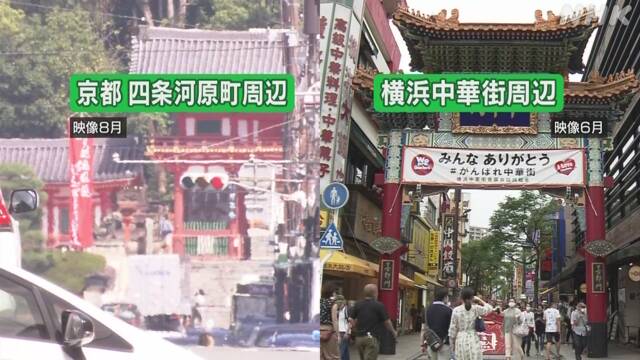The number of people in each area during the four consecutive holidays increased from the holidays before the spread of infection at 4:35 on September 23.
During the four consecutive holidays until the 22nd, the number of people in each area was lower than the same period last year in most areas, but compared to the holidays from January to February before the spread of the new coronavirus infection. There was also a place where it increased.
NTT DoCoMo collects data on the number of people nationwide in a privacy-protected manner based on information on mobile phone base stations.
According to this, the number of people on the 21st, which is the third day of the four consecutive holidays, and the 22nd, which is the last day, was lower in most areas than the average of the holidays in the same month and September last year.
On the other hand, compared to the average number of holidays from mid-January to mid-February before the spread of the new corona virus, the area around Tokyo Station was minus 50% on both the 21st and 22nd. In addition, in many areas around Shinjuku Station, around Umeda in Osaka, and around Nagoya Station, the number of people was minus 10% on the 21st and 20% on the 22nd. It was below the standard.
However, the number of people in downtown areas and tourist spots has increased, and on the 21st, the area around Shijo Kawaramachi in Kyoto was 61%, and the area around Yokohama Chinatown was 33%, which was a big plus. The area around Sapporo Station increased by 15%, the area around Okinawa Prefectural Office increased by 12%, and the area around Himeji Station in Hyogo Prefecture increased by 9%.
On the 22nd, the last day of the four consecutive holidays, the number of people decreased overall, but even so, the area around Shijo Kawaramachi was 29%, and the areas around Sapporo Station and Okinawa Prefectural Office were both positive by 4%.
While economic activity has gradually resumed and "Go To Travel", a measure to stimulate tourism demand, has begun, it has been shown that the bustle is returning depending on the region, but it is important to thoroughly implement infection prevention measures. It has become.

